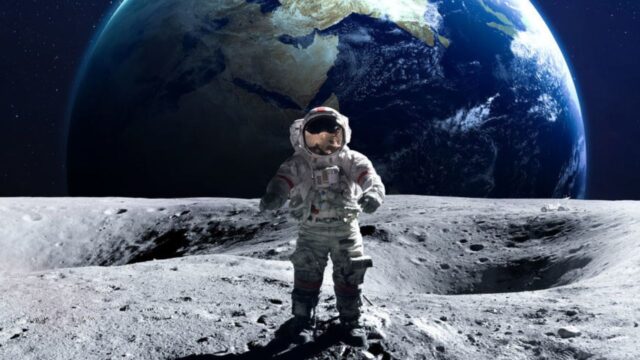NASA is planning to send astronauts back to the moon by the end of this decade, marking the first human steps on the lunar surface in over 50 years. However, these aren’t mere scientific missions. The Artemis missions are part of a grand strategy to lay the groundwork for human settlements beyond Earth, kickstarting extraplanetary colonization. Brendan Rosseau, a teaching fellow at Harvard Business School, believes it’s not a theoretical concept anymore; it’s happening.
The moon mission isn’t just about exploration, it’s about creating a space economy. NASA is partnering with private companies like SpaceX, Blue Origin, Nokia, Lockheed Martin, and General Motors. These collaborations aim to develop space-worthy vehicles, moon streaming, lunar GPS, and more. This new space market is estimated to be worth over $100 billion.
Unlike the Apollo missions of the 60s and 70s, which aimed to merely reach the moon, the Artemis missions are all about building a sustainable presence. The idea is to eventually turn the moon into a hub of human and robotic activity, a kind of interplanetary pit stop on the way to Mars.
There’s serious potential for commercial development on the moon. Steve Creech, acting deputy associate administrator for the Artemis campaign, talks about the prospect of “in-situ resource utilization.” Essentially, the moon’s resources could be mined and exploited either on the moon or brought back to Earth. Regolith, or moon dust, could be used to extract helium-3, a rare nonradioactive particle potentially useful in fusion reactors. The moon could also be mined for rare-earth elements left by meteorite impacts. However, the moon’s most attractive resource is water. Scientists have found water near the moon’s poles, which could be converted into fuel.
Prachi Kawade, a senior analyst at NSR, believes we’re about a decade away from sending people or robots to mine the moon. But she also notes that there are already business opportunities in preparation for this future industry. Kawade estimates that there are around $137 billion in opportunities over the next 10 years, with about 400-plus missions planned for launch during this period.
A key part of NASA’s strategy involves working closely with the private sector. After the retirement of the space shuttle program in the 2000s, NASA started a “commercial-first mindset,” awarding contracts to private actors to develop products and services. The strategy encourages the private sector to innovate while saving on NASA’s R&D costs.
In order to support long-term missions, an infrastructure has to be built. This includes cheap Earth-to-moon delivery systems, local power grids, moon-worthy vehicles, and navigation and communication networks. The agency has been investing in uncrewed robotic landers, partnering with Astrobotic Technology and Intuitive Machines for payload delivery. Lockheed Martin is working on bringing nuclear power reactors to the moon, while General Motors is developing a battery-powered lunar rover. Nokia, on the other hand, has been tasked to deliver internet to the moon.
Rocket development is another profitable venture. Elon Musk’s SpaceX and Jeff Bezos’ Blue Origin have both won billion-dollar contracts from NASA to develop human landing systems. Lockheed Martin also landed a contract to deliver six Orion spacecraft for the Artemis missions. If you want you can also read – How ISRO’s Chandrayaan-3 Mission is Different From Chandrayaan-2
However, the lunar market isn’t entirely independent yet. Currently, NASA remains the most significant client, and the market might not survive without its backing. Yet, private investment is gradually coming in, as evidenced by the funding acquired by AstroForge and Lunar Outpost for their respective missions. Companies will need to find more customers for their lunar products and services to make the market self-sustaining.
The resurgence of the space race is also an important factor in this scenario. Besides commercial interests, there are strong political incentives to reach the moon before China. The US is seeking to leverage its current advantage in satellites and budget to get a head start. However, China isn’t far behind, having launched more missions than the US in 2021 and accomplished a few significant milestones. Although both countries are signatories of the Outer Space Treaty, which prohibits territorial claims on the moon, being the first to establish a commercial presence there could confer a significant advantage.
















